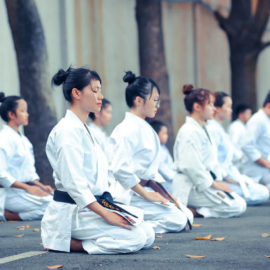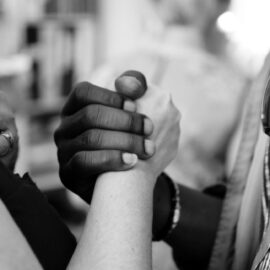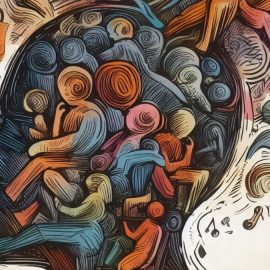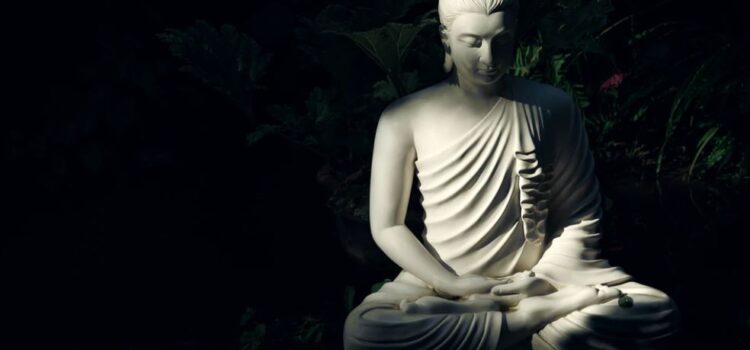
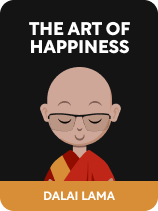
This article is an excerpt from the Shortform book guide to "The Art of Happiness" by Dalai Lama. Shortform has the world's best summaries and analyses of books you should be reading.
Like this article? Sign up for a free trial here .
What does Buddhism say about suffering? Can you really be free from suffering?
According to Buddhism, suffering is an inescapable fact of life. That’s why—paradoxically enough—freeing yourself from suffering requires that you first accept it as inherent to your existence.
Let’s explore the Buddhist take on suffering as a part of life and why you shouldn’t fight it.
Buddhists on Suffering
According to Buddhism, suffering is inherent to human existence. Everyone suffers, and attempts to free yourself from it—like through excessive drinking, drug use, or eating—provide only temporary relief or exacerbate the suffering. What’s worse, often, the destructive ways you avoid suffering become part of who you are. If you habitually transform your suffering into anger towards others, you become an angry person.
(Shortform note: It’s easy for suffering to lead to bad habits—as the Dalai Lama suggests—because of how the brain forms habits. According to Charles Duhigg in The Power of Habit, habits begin as conscious choices—to avoid suffering, for instance—which become automated loops. The reward at the end of the loop reinforces its validity, and the loop becomes a habit. For instance, you might suffer during a bad meeting with your boss and take your anger out on your family, which gives you relief. The relief reinforces the helpfulness of this loop in your mind, and it becomes a habit.)
If Suffering Is Inherent to Human Existence, Why Talk About It?
Viewing suffering as a fact of life may seem like it just causes more suffering, rejoins Cutler. It therefore might seem best to avoid thinking or talking about suffering.
(Shortform note: Many people take Cutler’s avoidance approach to unpleasant areas of their lives. But avoiding problems by procrastinating, ruminating, or behaving passive-aggressively usually only exacerbates the problems. Avoidance thus typically leads to suffering on all levels of your life.)
But there’s additional context in the Buddhist tradition that makes this discussion of suffering not only valuable but necessary, says the Dalai Lama. Buddhists believe that you can eliminate suffering. In Buddhist philosophy, ignorance, hatred, and craving create suffering. When you start eliminating those root causes of suffering, you move toward freedom from suffering.
(Shortform note: The Dalai Lama discusses your ability to eliminate suffering but doesn’t say what will happen once you do this. In Theravada Buddhism, once you’ve eliminated suffering, you become an arhat—someone who’s attained Nirvana, spiritual enlightenment. There are four stages of becoming an arhat, each one involving the elimination of different cravings, forms of anger, and types of ignorance.)
To Free Yourself From Suffering, Accept Your Suffering
Acceptance of suffering is the first, integral step toward eliminating it, says the Dalai Lama. If you can’t accept that life is suffering, you’ll only ever apply spot solutions to your suffering—like the destructive forms of numbing, described above. You won’t free yourself from its root causes of ignorance, hatred, and craving.
(Shortform note: Acceptance is also an important step in addiction recovery programs, usually seen as the first, foundational step on the road to recovery. It encompasses acceptance of your addiction and how it’s affected your life, acceptance of yourself and your flaws, and acceptance of the challenges you’ll encounter as you recover from your addiction.)
When You Accept Suffering, You Don’t Add to Your Suffering
Accepting suffering keeps you from imposing additional layers of suffering on yourself, says the Dalai Lama. Much of your suffering stems simply from the belief that you don’t deserve to suffer. Understanding that suffering must happen frees you from the painful feelings that things should be different.
For instance, if you miss your train, you might suffer a little from the inconvenience of getting home later. But you dramatically increase your suffering by adding on feelings that it’s unfair that you missed the train, that the train service is attacking you, and so on.
(Shortform note: The Dalai Lama states that accepting suffering prevents you from making yourself suffer even more. But can self-created suffering ever be productive? When people feel the effects of a bad situation particularly strongly—in other words, suffer more than others—they may be more likely to grow from that situation, provided they contextualize it as a learning experience. This is why successful people are often hard on themselves: They make themselves suffer so they can grow more fully.)
Accepting Suffering Is Not the Same as Surrendering to It
The Dalai Lama notes that accepting suffering is not the same as rolling over to it. As discussed in the first chapter, our purpose is to seek happiness. It’s natural and right that even though we accept suffering, we also try to reduce it.
(Shortform note: Standing up against suffering can sometimes take the shape of standing up for yourself in confrontational situations, rather than letting others cause you to suffer. You can stand up for yourself by being genuine and truthful and reacting calmly but firmly to unfair demands.)
Accepting Suffering Involves Understanding Its Source
Beyond accepting suffering, also understand it, advises the Dalai Lama. Reflect on what makes you suffer and why. When you put your finger on it, formless suffering takes shape. You then can reduce or eliminate it.
(Shortform note: Here, we see a reappearance of Step #1 of cultivating a happiness mindset: educating yourself. In this case, you educate yourself on the nature of your suffering, while in the chapter on cultivating a happiness mindset, you educate yourself on your psyche more broadly, working to understand your emotions. The process remains the same, though.)

———End of Preview———
Like what you just read? Read the rest of the world's best book summary and analysis of Dalai Lama's "The Art of Happiness" at Shortform .
Here's what you'll find in our full The Art of Happiness summary :
- The Dalai Lama's Buddhist path toward happiness
- The use of scientific evidence to support the Dalai Lama's beliefs
- Concrete actions you can take to improve your outlook on life, relationships, and resilience

